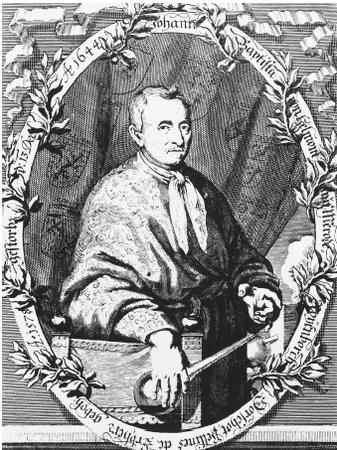Johann Baptista van Helmont
FLEMISH RELIGIOUS SCHOLAR, PHYSICIAN, AND CHEMIST
1579–1644
Johann Baptista van Helmont was a contemporary of the English philosopher Francis Bacon and the Italian astronomer Galileo Galilei. As with Galileo and his work, van Helmont's work in science brought him into conflict with religious authorities. He also spent about sixteen years under house arrest while an Inquisition court prosecuted its legal case against him. His use of chemistry to understand medicine made him a leading iatrochemist (physician-chemist, iatro being Greek for "physician") of his time.
Van Helmont was the first to use the term "gas" to describe an airlike substance that was distinct from ordinary atmospheric air. His approach to chemistry included both mysticism and the use of the new experimental philosophy (science). He believed in astrology and the philosopher's stone . His study of the written works of Paracelsus led to his criticism of established medical practice and his adoption of experimental testing. He tested Paracelsus's notion that all substance was made of "earth" by conducting his "willow tree experiment." In the experiment he weighed a pot that contained dry soil and a willow sapling cleansed of soil. After planting the sapling in the soil, he added no soil, and watered the sapling with pure rainwater

or distilled water (and not with mineral water or well water, which might contain dissolved earth). At the end of five years he removed the tree from the soil, weighed it, and weighed the dried pot of soil. The soil had lost nearly none of its weight, whereas the tree had gained a great deal of weight. Van Helmont concluded that a tree was not composed mostly of "earth," as avowed by Paracelsus, but was composed mostly of "water," somehow transformed into tree substance.
Van Helmont offered another experiment as a proof of the existence of vacuums. He positioned a lighted candle upright in a wide tray of water. He used a glass dome to enclose the candle, with the edge of the glass immersed in the water. The candle soon went out, and the level of the water enclosed by the glass rose. Van Helmont claimed there was something in the air that was annihilated by the fire. The water rose due to suction that had been created by a vacuum that resulted from the annihilation of a part of the air. This description is essentially correct. The experiment would continue to be investigated by chemists for another 150 years, ultimately becoming a model experiment in the chemical revolution.
SEE ALSO Alchemy ; Paracelsus ; Transmutation .
David A. Bassett
Bibliography
Pagel, Walter (1982). Joan Baptista van Helmont: Reformer of Science and Medicine. New York: Cambridge University Press.
Partington, J. R. (1961; reprint 1996). A History of Chemistry, Vol. 2. New York: Martino Publishing.
Comment about this article, ask questions, or add new information about this topic: